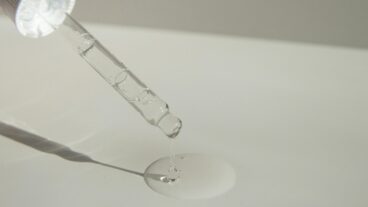“There is a good reason why the snake is a symbol for the medical profession in America.” – Dr. Naftali Primor.As the world looks to nature to find cures for some of the world’s most debilitating diseases such as cancer, heart disease, and strokes, an Israeli company – Shulov Institute for Sciences Ltd (SIS) – has unlocked the chemicals found in deadly viper venom to help treat arthritis. About 2.1 million Americans suffer from rheumatoid arthritis (about 0.5 to 1 percent of the U.S. adult population), according to the National Institutes of Health. More than 70 percent of them are women, according to the American College of Rheumatology.
According to Dr. Naftali Primor, R&D manager for SIS, snakes can help relieve the pain of arthritis sufferers. There are 4000 species of snakes, 400 venomous ones in the world, says Primor, a snake specialist and biochemist. Primor is attempting to turn around the bad press on snakes, and help them get recognition for the medical prominence they deserve.
There is a good reason why the snake is a symbol for the medical profession in America, Primor explains, tracing the history of the healing properties of snakes back to the ancient Greeks.
SIS was founded in 1986 by the late Prof. Aharon Shulov of the Hebrew University and Mr. Aviv Marx. The company currently commercializes a life saving antiserum to treat yellow scorpion stings, which is approved for use by the Israeli Ministry of Health and is marketed to hospitals. A topical analgesic reliever based on snake venom is expected to be on the shelves within 5 years.
The scientific team that Primor heads at SIS has identified the chemicals in the snake venom of cobras, vipers and rattlers. The company is using this knowledge to make a potent analgesic against chronic pain such as arthritis, and secondary pain caused by other diseases such as cancer. Primor suspects that the venom has therapeutic properties also, but more studies need to be done.
It is not just a wacky idea. Snake venom has already led to several new drugs used by Americans. Take for example, Aggrastat, a ‘super aspirin’ introduced by Merck & Co to prevent blood clots and to help prevent heart attacks in people hospitalized with severe chest pain. The drug came about through the knowledge that some victims of snakebites bleed to death because the venom contains proteins that prevent blood clotting.
Researchers from Temple University in Philadelphia and Merck isolated molecules from actual viper venom, then Merck built a synthetic molecule to mimic the viper’s anti-clotting effect, but without the toxins. Through a similar process, SIS is attempting to create an arthritic pain reliever.
Primor had always been fascinated by snakes and started working with viper venom back in the early 1980s, when his colleague, Shulov, noticed a strange practice by new immigrants to Israel. Russian immigrants were bringing with them a healing salve made out of viper venom, which was spread on the skin to ease chronic pain – rheumatic and muscular. Shulov approached Primor who had just returned from post-doctoral work at Colorado University and asked him to study how the venom works.
The researchers were curious if the eastern European and Asian folk remedies could be validated scientifically, and Primor was doubtful at first.
The Palestinian Viper, Vipera palaestinae, was chosen as the original test subject as it is the most prolific snake found in Israel. Primor took the venom and separated it by chemical means and found that out of about 1000 molecules present, only 4 or 5 are poisonous. At the initial investigation, an analgesic molecule was isolated and from that a synthetic copy, the VeP-3 was derived and replicated.
“About 99 percent of the venom is non-toxic, which leaves us with a great source of possible drug components,” Primor told ISRAEL21c, adding that he’s hopeful that the remaining untested molecules may hold the key to solving deadly diseases such as cancer.
Today, the company continues to work on mode-of-delivery and toxicity studies and hopes for funding from the National Institute of Health (NIH); talks with the Food and Drug Administration (FDA) are underway. Based on what was witnessed among the Russian population, viper venom cream could be a common topical pain reliever in every house one day, agrees Primor, “But they were using toxic stuff. There is no hope that with western regulation standards, such material could be approved.” The Merck technique of creating a synthetic molecule to mimic the benefits without the toxins will hopefully solve that problem.
According to the FDA, every state but Maine, Alaska and Hawaii is home to at least one of 20 domestic poisonous snake species. There are about 8000 snake bites a year in the US, which leads to about 5 deaths.
“Snakes use venom to alter biological functions, and that’s what medicine does too,” said John Perez, director of the Natural Toxins Research Center at Texas A&M University-Kingsville in a National Geographic interview. “This is why venoms have always been of interest to medical researchers.”
Primor’s cousin Zev Primor, a sculptor, was interested in what viper venom could do for bouts of arthritis, which left him immobilized. For two months, two years ago, he applied the cream to his legs and noticed a marked decrease of pain and an increase of flexibility in his joints. The synthetic venom derivative mixed with common hand-cream, of course, must pass rigorous FDA standards and tests before it can be sold to the public.
As for why analgesic properties exist at all in snakes, Primor believes they are chemicals needed to protect a snake from being poisoned by its own venom.
The medical benefits aside, snake lovers and naturalists could agree that Israel is a snake lover’s paradise. Israel is home to about 40 snake species, nine of which are venomous (and poisonous). One to watch out for (and avoid) is the Burrowing Asp, Atractaspidae. It can deliver bites without opening its mouth, by moving its fangs horizontally from left to right. “It is an amazing one-of-a-kind adaptation to deliver bites as it burrows underground,” says Primor.
It is no mystery why this Israeli scientist chose snakes for his work. “I have been running after snakes since I could run,” jokes Primor, 62. “I have venomous snakes and I milk them once a month: cobras, rattlesnakes, copperheads, vipers. When I milk them for their venom, it is a day of pleasure. I have to prove all my abilities to act correctly. I can make no mistakes. A tiny mistake of 1 or 2 millimeters would be taken advantage of by the snake. I have to act perfectly and the snake has to act his way, to test my abilities.
“I am hoping to replace the fear of snakes with beauty and interest..”
If, despite their positive qualities the thought of snakes, still makes you tremble, Primor says there are two safe options, “There are no snakes in Hawaii or New Zealand.”












